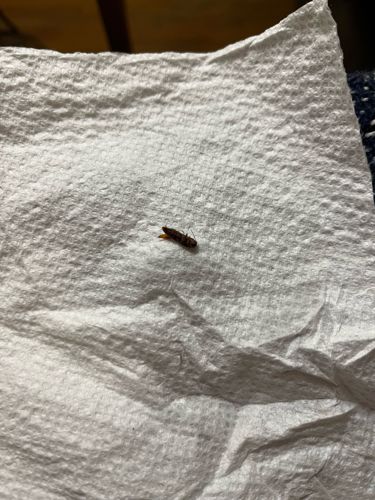Earwig
Scientific Name: Forficula auricularia (among others, as it's the most common species)
Order & Family: Order: Dermaptera, Family: Forficulidae (Common Earwigs)
Size: Typically 5-25 mm (0.2-1 inch) in length, though some larger species exist.

Natural Habitat
Earwigs prefer dark, moist, cool environments. They are commonly found outdoors in gardens, under rocks, logs, leaf litter, mulch, and in cracks in pavements. Indoors, they can be found in basements, bathrooms, kitchens, and other damp areas.
Diet & Feeding
Earwigs are omnivores. Their diet typically includes decaying organic matter, small insects (such as aphids, slugs, and other garden pests), mites, and plant material (young leaves, flowers, and soft fruits). They can sometimes be considered a garden pest.
Behavior Patterns
Earwigs are primarily nocturnal and seek out dark, moist places during the day. They are often found under rocks, logs, leaf litter, or in cracks and crevices. They are known for their rapid scuttling movement. Some species are solitary, while others exhibit maternal care for their eggs and young nymphs.
Risks & Benefits
Potential risks include being a nuisance pest indoors and causing minor damage to garden plants. They are generally harmless to humans, though they can pinch with their cerci if handled, which is not painful. Benefits include being natural predators of some garden pests like aphids and slugs.
Identified on: 8/10/2025